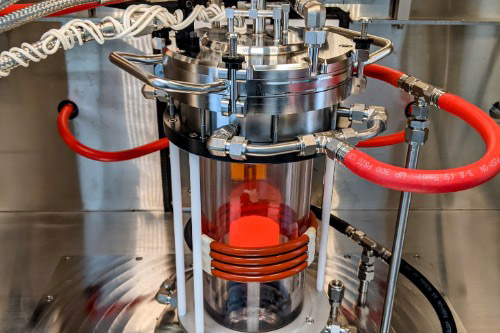News: Microelectronics
28 April 2022
Bristol installs gallium oxide MOCVD system
As the drive to cut carbon emissions intensifies and fuel costs soar (making need to reduce energy consumption even greater), a team at the University of Bristol has installed the UK’s first metal-organic chemical vapor deposition (MOCVD) system for the epitaxial deposition of gallium oxide (Ga2O3), which can be used to make power electronics devices that could cut overall energy usage by about 20% in both domestic and industrial settings, it is reckoned.
“With the push to introduce more efficient power electronics and advanced renewable technologies amidst the pressing climate crisis, this presents a game changer for more sustainable and affordable future energy supply,” reckons project lead Martin Kuball, Professor of Physics and the Royal Academy of Engineering Chair in Emerging Technologies.
“At present, nearly three-quarters (72%) of global primary energy consumption is wasted. While most low-carbon technology still relies on silicon-based electronic devices, we are slowly starting to see this replaced with semiconductors made from gallium nitride (GaN) and silicon carbide (SiC),” he adds. “As action to reduce our carbon footprint accelerates, a stronger focus on developing devices based on gallium oxide must happen and we are committed to progressing this at scale and speed.”
The 20-strong team of researchers is collaborating with other groups across the globe including in Japan, the USA and Germany, as well as industry partners such as Dynex Semiconductors. Funded in part by the UK Royal Academy of Engineering, the gallium oxide MOCVD system from Agnitron Technology in the USA is the first of its kind in Europe.

Picture: Heart of the reactor in the MOCVD system. (Image courtesy of Cohen Rautenkranz, Agnitron Technology.)
The MOCVD system will be used to grow thin layers of gallium oxide as well as aluminium gallium oxide. The resultant power electronics devices are even more energy efficient than existing GaN and SiC components, says Kuball. “We will be activating the machine this month and aim to have our first gallium oxide-based components within the next few months.”
“Existing power converting units, often found in our streets, are container-size. Taking this technology to the next level could see them reduced to the size of a suitcase,” says Kuball. “You could then build distributed power networks, or smart grids, because the compact proportions make it possible to have more of them widely distributed. This would lower the risk of power outages for large parts of the town or city, as is presently the case when a power line goes down,” he adds. “The advantages of gallium oxide-based technology are vast. Now more than ever we must develop and refine the processes to fully realise this.”
Agnitron develops MOCVD capability for 10kV+ beta-phase gallium oxide switches
www.bristol.ac.uk/physics/people/martin-h-kuball/overview.html








